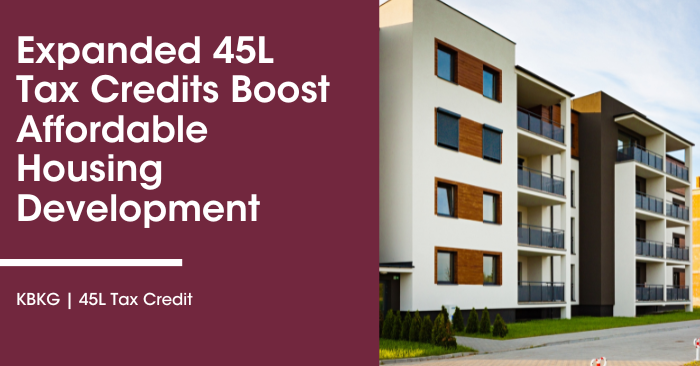Expanded 45L Tax Credits Boost Affordable Housing Development
The Inflation Reduction Act (IRA) has ushered in a significant expansion of the 45L Tax Credit, providing a substantial boost to affordable housing developers. These tax credits have seen an impressive increase, now offering up to $5,000 per unit – nearly a threefold jump from previous amounts.
Key Changes to the 45L Tax Credit
- Increased Credit Value: Developers utilizing HUD financing can now receive a tax credit of either $2,500 or $5,000 per unit. To qualify for the $2,500 credit, projects must meet specific energy efficiency and construction benchmarks. For the higher $5,000 credit, developments must additionally adhere to indoor air quality standards and incorporate solar readiness.
- Eligibility Across Building Heights: A significant shift from past limitations, the updated 45L credits are now accessible for multifamily buildings of any height. This includes mid-rise, high-rise, and mixed-use buildings, allowing these credits to be used in conjunction with the 179D energy-efficient tax deduction for buildings with four stories or more.
- LIHTC Coordination: The new framework removes the previous hurdle where 45L credits reduced the basis for calculating Low-Income Housing Tax Credits (LIHTC). This change means all affordable housing projects are now potential candidates for § 45L credits, not just those with additional or ‘excess’ basis.
Strategic Benefits and Planning
- Extended Opportunity: The IRA has granted a decade-long extension to the 45L credits, the longest in its history. This extension gives affordable housing developers a more extended period to strategize and incorporate these credits alongside LIHTC.
- The Importance of Proactive Planning: With the enhanced benefits of the 45L credits, it’s vital for developers to begin planning early. The inability to claim these credits retroactively from 2023 onwards underscores the need for immediate and forward-thinking in the preconstruction stages. By doing so, developers can fully leverage the increased value and flexibility offered by these revised tax credits.
In summary, the expanded 45L tax credits present a lucrative opportunity for those in affordable housing development. With the increased per-unit credit, broadened eligibility criteria, and extended timeframe, these changes mark a significant step forward in supporting affordable housing projects. However, developers must act proactively to maximize these benefits, as the new structure rewards early and strategic planning.
To find out how to maximize your 45L tax credits before it’s too late, click here to schedule a call with a KBKG expert.


